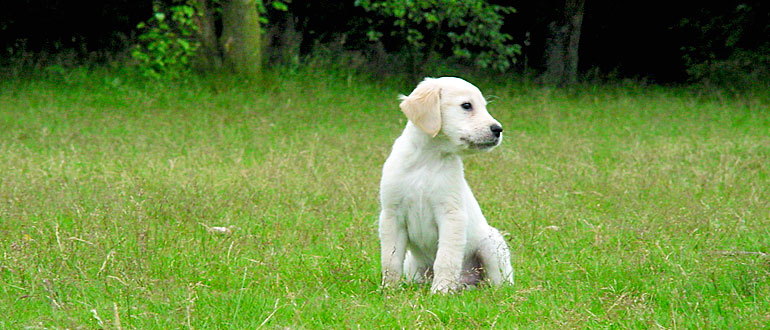How To Get Your Dog To Come Back To You


HOW TO GET YOUR DOG TO COME BACK TO YOU
16 December 2015One of the biggest problems facing owners is getting their dogs to come back to them when they’re called. You may be on a walk and it’s time to go home but your dog has other ideas, or your dog won’t respond to you whilst running after something they shouldn’t; if your dog doesn’t come back to you when instructed to, you may find you’re doing something wrong. Read the expert advice below from three top canine behaviourists to show how you can develop good recall in your dog.
Nikki Martin, Dickson Dog Training
Reward, reward, reward!!! Always praise your dog for coming back (even if it's taken them 20 mins). Play, interact with your dog when they do come back. Don’t always put them on the lead when you call them, they soon learn lead means end of fun.
Helen Gerard, Naturally Clever Canines
To develop a good recall, it needs to be a fun and positive experience. In classes we teach a range of techniques, including recall games, with the key being to make it fun for your dog and limit the opportunities of not coming back when called.
Often, dogs are let off lead before they are ready and when they don’t come back when called it is common for owners to get a little frustrated – especially if the owners have somewhere to go. Dogs can tell when we get frustrated as our tone changes and the more frustrated we get the less they want to come back to us. Would you want to go up to an angry person?
Due to this we strongly suggest using a long line (NOT a Flexi Lead) until your dog has a strong recall, with distractions. Also, use a reinforcement that you know your dog will work for in the environment you are in – make it worth coming back for and don’t only call back at the end of the walk as they will quickly learn that fun ends when they come back to you.
Helen Eade, Social Paws
The trick to developing a good recall by starting small and building up gradually - this means that you will have to start by teaching your dog what a recall cue is and some foundation exercises before you let him/her off the lead. The latter part will involve long lead training involving keeping your dog's focus with obedience exercises and lots of fun!
The recall cue
First you need to teach your dog a cue. This could be 'come', another word or his/her name combined with the cue. Many people use a whistle - I'd also suggest a whistle as it has no emotion and the same tone each time. You can teach the cue by throwing a ball or treat in a non-distracting environment and as your dog runs back to you pair the word you'd like to teach with a treat or praise for running back. You can then throw another treat or toy again. Practice this around 20-30 times.
Foundation exercises
Practice getting your dog to focus on you. This can be done in a non-distracting environment on a long lead. Start by rewarding your dog every time he or she looks at you. This is called 'check ins'. Then start to add the words 'look at me'. You are now asking for a behaviour. If your dog can't look at you or focus on you then how will you ever expect it to come when called? Later start to add more distractions - again if your dog won't look at you with distractions you've gone too quick. Go back to practicing with less distractions.
Long lead exercises
To set your dog up for success always practice recall on a long lead. The length varies on how far a distance you'd like your dog to be. Start adding more distractions and remember lots of praise and rewards when your dog comes back.
Obedience training
Once your dog is coming back to you it's important to remember that a good recall involves other obedience too. This can help prevent your dog from running up to another dog or easily knocking a person over. Again using a long lead practice basic commands such as 'with me' 'wait' 'leave' then build up the distractions gradually.
Fun!
Many dogs don't come back as there is no reward and no fun. If you make it a game where the biggest prize is your praise and lots of fun the dog will love coming back! Some simple tips include running the the way, playing hide and seek and vocalisation - creating excitement with your voice.
Problematic associations
We don't want your dog to see that lead on means the fun is over, so when walking take the lead on and off randomly and always reward when putting it back on.
Still having problems?
If you are still having problems go back to the foundation exercises and ensure that the reward you are giving your dog is good enough. Find out what makes your dog tick! Always keep it fun and ensure your dog is nice and tired before any training. Only let your dog off if you can guarantee he or she will come back or if there are no other distractions around in the initial training stages. Every dog has its threshold work with it - that could be that your dog will only come back when another dog is twenty metres away so start with twenty metres and build up gradually.
Join our mailing list....

We recommend....












